How Do Email Accounts Get Hacked?
There are a variety of methods that hackers can use to find their way into your email account. And unfortunately, scammers and thieves are discovering new tools and techniques all the time.
Weak or reused passwords: Passwords that are easy to guess like those with a common word or your birthday as well as those that people use again and again for multiple different accounts are susceptible to hackers.
Phishing and email spoofing: Phishing is when fraudsters try to trick people into revealing sensitive information via email, and spoofing is when you receive a message you believe to be from a trusted source but it’s actually not. Scammers use these methods to obtain information and gain access before you can block the phishing and scam emails.
Absence of 2FA: Two-factor authentication provides an extra layer of security by requiring you to verify your identity after using your email address or username and password to sign in. Not taking advantage of this feature that’s offered by most email service providers can leave your account exposed.
Leaked credentials from other breaches: When security breaches occur, email addresses, usernames, passwords, and other data falls into the hands of scammers and thieves. Many times, this data is even shared or sold.
Sign-ins from public devices or unsecure Wi-Fi networks: If you access your email when in a public space like the library or shopping mall, you’re connecting to a network that’s normally not secure. This leaves your device vulnerable to hackers.
Lack of malware or virus protection: Because malware and viruses spread rapidly, it’s important to use trustworthy security software on your device to scan for threats. Remember these threats can be distributed via email in attachments or the web in downloads, infecting your device and gathering information.
Warning Signs Your Email Is Compromised
Sadly, most users don’t realize they’ve been hacked until the damage is done. If you suspect that your email account has been compromised or want to regularly check for symptoms before it’s too late, below are several warning signs.
- Your password doesn’t work.
- You’ve received a password change or reset notification.
- You’ve noticed changes in your account or settings.
- You’ve received security alerts.
- You’ve seen emails sent from your account that aren’t from you.
- Your contacts have received emails from you that you didn’t send.
Whether you’ve noticed something in the above list or not, you don’t have to guess if your email has been hacked. Clean Email’s Privacy Monitor will notify you when it detects a breach involving your email account (sign up here). You’ll also see the number of incidents and details about the potentially compromised data.

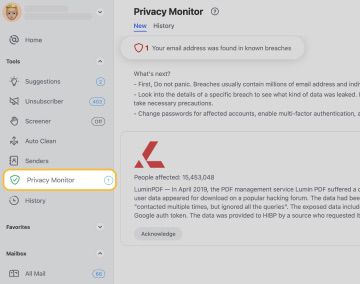
Immediate Action Plan If You’re Hacked
When you discover that someone has hacked your email account, time is of the essence. But don’t panic; follow this checklist for taking quick action.
- Change your password.
- Run a virus scan.
- Turn on 2FA.
- Check your other accounts.
- Report it to your email service provider.
- Let your contacts know.
- Notify the credit agencies.
💡 Tip: Learn more about password security best practices and creating strong passwords.
Ongoing Prevention: Secure Your Inbox Like a Pro
You may now be wondering how to protect your account from hackers moving forward. Because being proactive is the best prevention against threats, consider the following list of tips for email account protection.
- Use a strong, unique password and change it regularly.
- Enable 2FA and two-step verification where available.
- Review all security alerts you receive.
- Only sign in to your account when connected to a secure network.
- Report spam and phishing emails.
- Block shady or untrustworthy senders.
- Don’t click links or download attachments from suspicious emails.
- Don’t share personal or sensitive information via email.
- Consider using a VPN when checking your inbox.
- Install and regularly update antivirus software.
- Keep your devices and operating systems up to date.
For Apple users, you can also use the Hide My Email feature and if you’re wondering how to protect a Gmail account specifically, look at these additional ways to increase security for Gmail.
Manage a business account? According to Verizon’s 2025 Data Breach Investigations Report with published insights from Keepnet Labs, “Business Email Compromise (BEC) losses hit $6.3B, with a median loss of $50K.” This means that a monetary loss is also a possibility.
With this in mind, consider implementing SPF/DKIM/DMARC authentication protocols that verify senders to curb phishing and spoofing. And be sure to regularly audit app integrations and access.
How Clean Email Helps Spot Leaks Early and Recover Faster
To accompany the above Ongoing Prevention tips to secure your inbox, look to Clean Email for features that keep you abreast of incidents and better protect your mailbox.
While Clean Email doesn’t prevent hacking, it does automatically notify you when your credentials appear in known data breaches. Using the built-in Privacy Monitor, which works like a hacked email checker, you can stay on top of incidents involving your email so that you can act fast. Try it for free today!
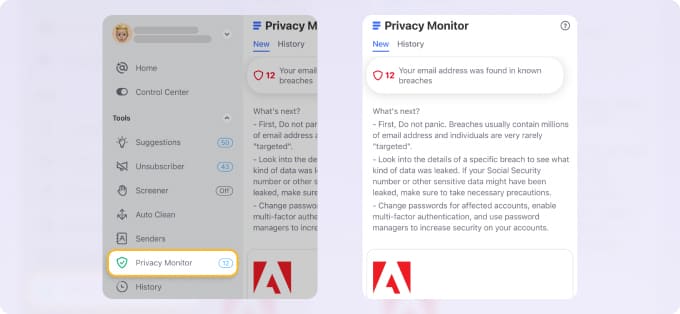
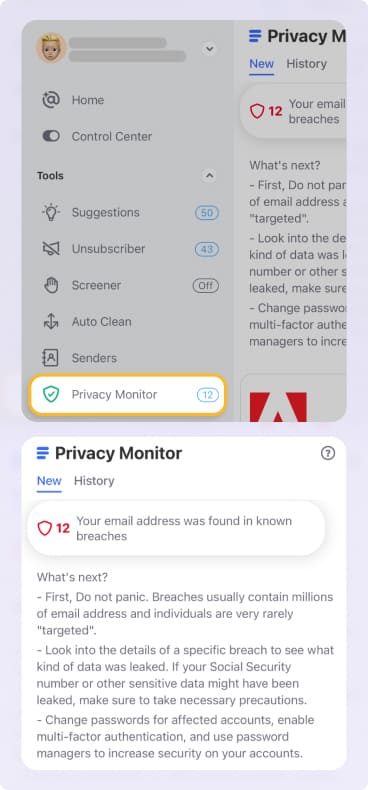
Additionally, Clean Email gives you the features you need for a quick mass cleanup and easy long-term prevention. Once you see that your email has been involved in a security incident, you can:
- Enable Screener to isolate all unknown senders until you review and then approve or block them.
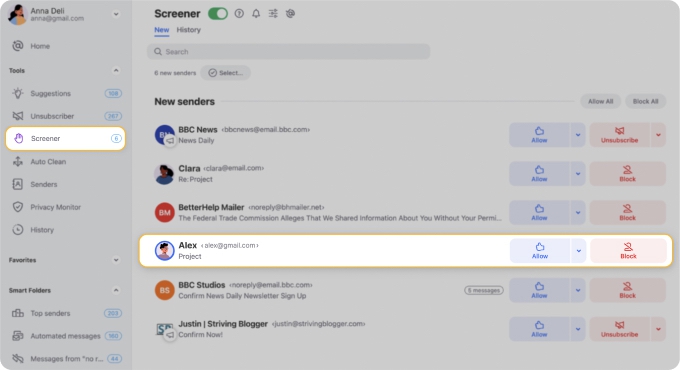
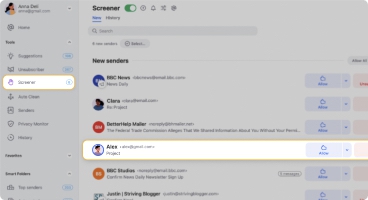
- Clean spam and phishing email floods using bulk actions that delete hundreds of messages at once.
- Set up Auto Clean inbox rules that automatically block suspicious domains or senders.
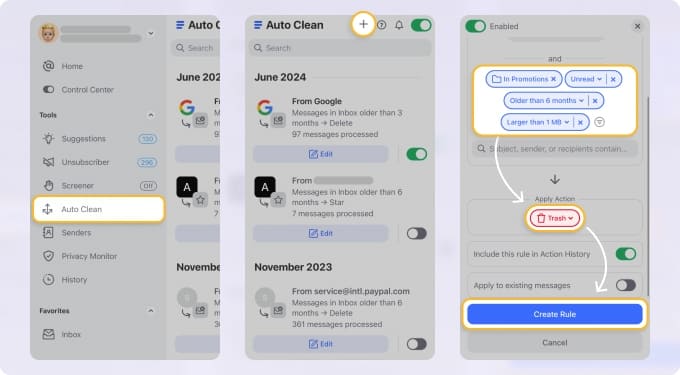

- Use Unsubscriber to remove yourself from multiple junk mailing lists to reduce exposure.
There’s no need to scan the dark web and endanger yourself further when Clean Email has breach alerts built right in. Best of all, Clean Email is safe to use on each of your devices and works with all IMAP service providers.
Conclusion
By the time you start Googling how to protect your email from scammers or how to secure a Gmail account from hackers, it may be too late.
Recognize the signs you see here about how fraudsters can gain access to your email. Make note of what to do immediately if it happens to you. And finally, take the necessary steps for ongoing email account protection with tools like Clean Email.


